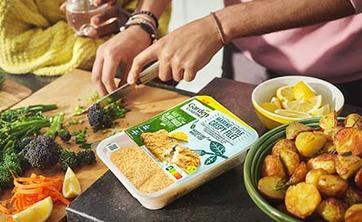Quality and safety

Our commitment to consumers
Quality and safety for our consumers is Nestlé’s top priority. This applies to our entire portfolio, from foods and beverages to all our systems and services.
Quality assurance and product safety is one of Nestlé’s 10 Corporate Business Principles (pdf, 1 Mb), which form the foundation of all we do.
Our approach to quality and safety
Our end-to-end approach to food safety and quality applies to design, delivery and how food is experienced. Many of our internal systems are audited and verified by independent certification bodies to prove conformity to internal standards, internationally recognized standards, laws and regulatory requirements.
Our Quality Policy
Our actions to ensure quality and food safety are guided by the company’s Quality Policy (pdf, 2 Mb) which describes our commitment to:

From farm to fork
Our Quality Management System starts on farms. We have a long history of working together with farmers in rural communities to help them improve the quality of their materials and adopt environmentally sustainable farming practices.
The Quality Management System not only ensures our ongoing access to high quality raw materials, it also enables farmers to protect their productions and raise the living standard of entire rural communities as a result. The system helps address key global environmental and social issues.
Quality by design
We understand and adhere to the roles and responsibilities that are required of us as the world’s largest food and beverage company. We are constantly looking for ways to strengthen competencies and leverage lessons learned. Our food safety and compliance model consists of internal and external independent assessments.
Using various risk assessment tools, including Hazard Analysis and Critical Control Points (HACCP), IRIS (Integrated Risk Identification Solution) and HINT (Hygiene Intelligence Tool), we can define product vulnerabilities and identify key areas of improvement. In 2023, our Quality Assurance Centers performed more than 4.1 million analytical tests as part of ongoing food safety risk assessment and management.

Good Manufacturing Practices
We apply internationally recognized Good Manufacturing Practices (GMP) to ensure quality and food safety. GMP covers end-to-end product manufacturing, including standard operating procedures, people management and training, equipment maintenance and handling of materials.
Hazard Analysis and Critical Control Points
We apply the internationally recognized HACCP (Hazard Analysis and Critical Control Point) system to ensure food safety. This preventive and science based system identifies, evaluates and controls hazards that are significant for food safety. It covers the entire food production process from raw materials to distribution and consumption. Our HACCP plans and systems are verified by external certification bodies against the international ISO 22’000:2005/ISO 22002-1 standards.
Consumer use
Our products carry information to ensure that they are used safely with the highest level of quality for the consumer. Collaborating to mitigate risks
Collaborating to mitigate risks
We work with partners to better model and anticipate potential food safety challenges, helping us to determine how best to respond to the real impacts of environmental and geopolitical events. Internally, we are enhancing our analytics capability by using cutting-edge technologies at our Quality Assurance Centers. These technologies enable us to identify and assess the risks posed by chemical contaminants, packaging migrants and microbiological hazards.
Consumer services
Our worldwide consumer services organization ensures that we can respond in a timely manner to any consumer inquiry, question or concern. Nestlé provides information for consumers to engage with the business, including a way to easily contact us.
If you have a question or concern, contact us.










